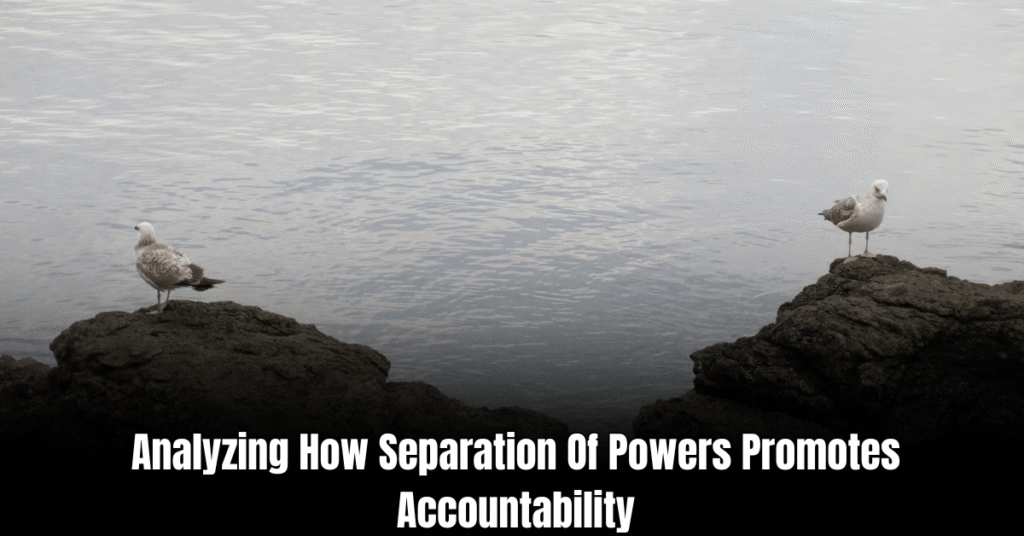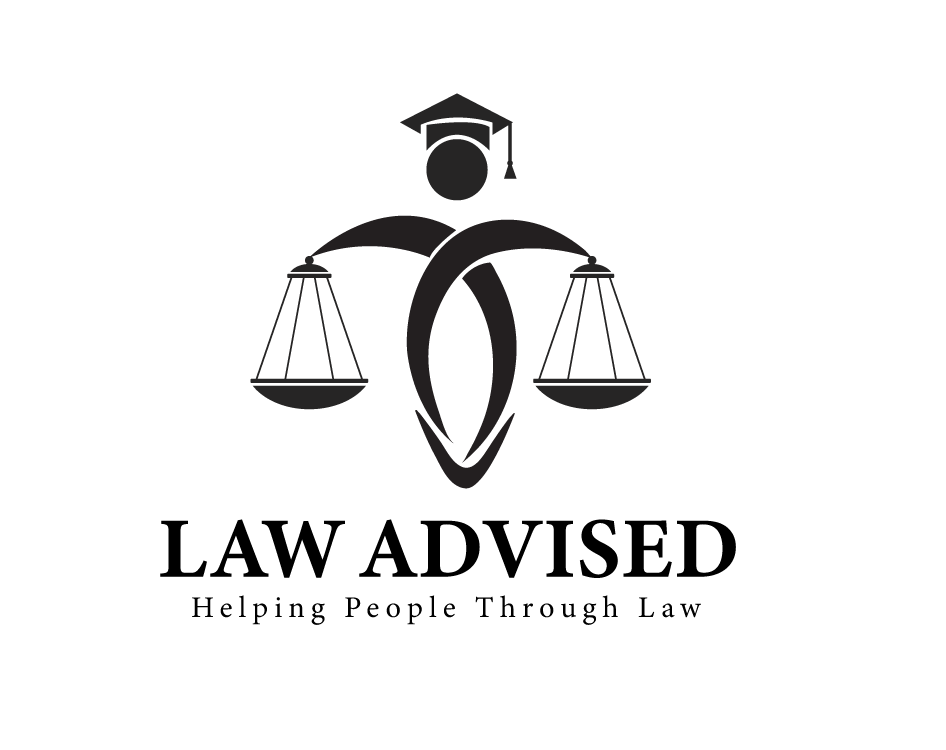The separation of powers divides government powers among different branches, while checks and balances ensure that each branch can limit the powers of the other branches. The separation of powers and checks and balances are essential components of modern democratic systems.
These principles are designed to prevent the accumulation of power in one branch of government, ensuring a system of checks and balances to protect against potential abuses. While the separation of powers allocates different powers to different branches (typically executive, legislative, and judicial), checks and balances provide mechanisms for each branch to restrain or correct the actions of the other branches.
This system allows for a balance between the branches, preventing any one branch from becoming too influential or abusive in its powers. Understanding the distinction between separation of powers and checks and balances is crucial for maintaining a functioning democratic system.
The Concept Of Separation Of Powers
The concept of separation of powers refers to the division of governmental power among different branches, namely the legislative, executive, and judicial branches. This principle, also known as trias politica, aims to prevent the accumulation of power in one person or group and to safeguard individual liberties.
Understanding The Origin And Definition Of Separation Of Powers
The origins of the separation of powers can be traced back to ancient Greece, where the philosopher Aristotle first suggested the idea of dividing political authority. However, it was the French philosopher Montesquieu who popularized the concept in his influential work “The Spirit of the Laws” in the 18th century.
The separation of powers is defined by the allocation of specific responsibilities to each branch of government. The legislative branch makes laws, the executive branch enforces those laws, and the judicial branch interprets and applies laws.
Examining The Significance Of Separate Branches Of Government
Separation of powers ensures a system of checks and balances, where each branch has its own distinct powers and limitations. This system safeguards against tyranny and abuse of power by allowing each branch to keep the others in check.
The legislative branch has the power to create laws, the executive branch can veto legislation and implement policies, and the judicial branch can review laws for constitutionality. By having separate branches, there is a system of accountability and protection of individual rights.
The Concept Of Checks And Balances
The concept of checks and balances is a fundamental principle in the governance system of many democratic countries, including the United States. It is designed to prevent any one branch of government from becoming too powerful and abusing its authority. Checks and balances ensure that there is a separation of powers between the executive, legislative, and judicial branches, each with its own specific roles and responsibilities.
Simply put, checks and balances refer to the ability of each branch of government to monitor and limit the actions of the other branches. This system ensures that no single branch can dominate the others or act unconstitutionally. Checks and balances encourage collaboration and cooperation among the branches, fostering a fair and effective system of government.
The purpose of checks and balances is to prevent any branch of government from becoming too powerful and to protect individual rights and freedoms. By allowing each branch to exercise some control over the others, it helps to maintain the separation of powers and safeguards against the concentration of power in the hands of a few. This system promotes accountability, transparency, and ultimately, a more democratic society.
Allocation Of Powers In the Separation Of Powers
The concept of separation of powers establishes a division of power among three branches of government: the executive, the legislative, and the judicial. Each of these branches is assigned specific responsibilities to ensure a system of checks and balances is maintained.
| Branch | Specific Responsibilities |
|---|---|
| Executive | Responsible for enforcing laws, managing foreign affairs, and commanding the military. |
| Legislative | Enacts laws, controls the budget, and has the authority to declare war. |
| Judicial | Interprets laws, resolves disputes, and ensures the constitutionality of actions taken by the other branches. |
These branches are independent and possess powers that act as a counterbalance to one another. The separation of powers prevents excessive concentration of authority in any one branch, which could lead to authoritarianism or abuse of power.
By distributing powers among the three branches, the separation of powers also provides a system of checks and balances. This means that each branch can limit or monitor the actions of the others, ensuring that no branch becomes too powerful. For example, the legislative branch can override a presidential veto, the executive branch can appoint judges, and the judiciary can rule on the constitutionality of laws passed by the legislative branch.
Interdependence Of Powers In Checks And Balances
Checks and balances are a fundamental principle in a democratic government that ensures no single branch has complete control. The interrelations between the branches – legislative, executive, and judicial – play a crucial role in maintaining this equilibrium. Each branch has specific powers and responsibilities that are designed to work in harmony, making their actions dependent on one another. For example, the executive branch can veto legislation passed by the legislative branch, which can be overridden with a two-thirds majority vote. Similarly, the judicial branch can declare acts of the legislative or executive branch unconstitutional.
By having this system in place, each branch acts as a check on the others, ensuring that no single branch becomes too powerful. This interdependence facilitates a careful decision-making process as it requires collaboration and compromise among the branches. Additionally, it promotes transparency and accountability, as the actions of one branch are subject to review and potential restriction by the others.
The impact of checks and balances on decision-making and governance is significant. The system encourages a thorough and thoughtful deliberation process, which helps prevent hasty or poorly considered decisions. It requires the branches to justify their actions and provide legal and constitutional justifications, ensuring that the government as a whole acts within the limits of its authority.
Roles Of Each Branch In Separation Of Powers
The separation of powers is a fundamental principle of democratic governance, ensuring a system of checks and balances within a government. Each branch – legislative, executive, and judiciary – plays a distinct role in upholding this principle.
Examining The Legislative Branch’s Function And Responsibilities
The legislative branch, consisting of Congress, is responsible for creating and passing laws. It is vested with the power to propose bills, debate issues, and ultimately make decisions that shape the nation’s governance. Through its ability to oversee the executive branch and interpret the law in line with the Constitution, the legislative branch serves as a crucial check and balance on the other branches.
Analyzing The Executive Branch’s Role And Powers
The executive branch, led by the President, has the authority to enforce and administer the laws passed by the legislative branch. It is responsible for carrying out essential functions such as foreign diplomacy, military command, and the execution of policies and legislation. Through its power to veto legislation and the appointment of federal judges, the executive branch exercises a significant influence on the separation of powers.
Discussing The Judiciary Branch’s Duties And Authority
The judiciary branch, headed by the Supreme Court, is tasked with interpreting and applying the law. Its core responsibility is to ensure that laws passed by the legislative branch and actions undertaken by the executive branch are in line with the Constitution. With its power of judicial review, the judiciary branch ensures adherence to the separation of powers by regulating potential abuses or oversteps by the other branches.
Roles Of Each Branch In Checks And Balances
Separation of powers and checks and balances are two fundamental principles in the functioning of democratic governments. While they are related, they have distinct characteristics that set them apart.
In the system of checks and balances, each branch of government has specific roles and responsibilities to ensure that no single branch becomes too powerful. Let’s first examine the legislative branch’s role in this system:
- The legislative branch, which consists of the Senate and the House of Representatives, is responsible for making laws. It acts as a check on the executive branch by approving or rejecting appointments and treaties.
- Furthermore, the legislative branch has the authority to impeach and remove officials from the executive and judicial branches, providing a necessary check on their actions.
Now, let’s shift our focus to the executive branch:
- The executive branch, headed by the President, is responsible for enforcing and implementing laws enacted by the legislative branch. It has the power to veto bills passed by Congress, thereby checking the legislative branch’s authority.
- The President’s ability to appoint federal judges also ensures a level of influence on the judiciary branch, another mechanism of checks and balances.
- The judiciary branch, led by the Supreme Court, plays a crucial role in interpreting laws and resolving disputes. It acts as a check on both the legislative and executive branches by declaring laws or actions unconstitutional.
- The power of judicial review gives the judiciary branch the authority to safeguard the system of checks and balances, ensuring that the actions of all branches of government align with constitutional principles.
By understanding the distinct roles of each branch in the system of checks and balances, we can better appreciate the importance of maintaining the separation of powers.
Ensuring Accountability In the Separation Of Powers
The concept of separation of powers is distinct from checks and balances as it focuses on maintaining accountability among the different branches of government. This ensures that each branch has defined roles and powers, preventing any one branch from becoming too powerful.

Analyzing How Separation Of Powers Promotes Accountability
The concept of separation of powers plays a crucial role in ensuring accountability in government systems. By distinctly assigning legislative, executive, and judicial powers to separate branches, the system provides a series of important checks and balances.
One key argument in favor of the separation of powers is that it prevents any single branch from becoming too powerful and potentially infringing upon the rights and freedoms of citizens. The division of powers fosters a system of mutual oversight, where each branch scrutinizes the actions of the others. This promotes transparency and accountability, as well as helps prevent abuse of power.
However, the separation of powers also presents challenges. It requires effective communication and collaboration between the branches to function properly. Additionally, potential overlapping jurisdictions and conflicts of interest may arise, creating the need for mechanisms to resolve disputes and ensure efficient decision-making.
In conclusion, the separation of powers and checks and balances are essential principles in maintaining accountability within a government. Despite the challenges they present, when implemented effectively, these systems promote transparency, protect individual rights, and prevent the concentration of power.
Safeguarding Against Abuse Of Power In Checks And Balances
The concept of checks and balances plays a fundamental role in safeguarding against the abuse of power within a government system. Checks and balances ensure that no single branch of government becomes too powerful, thereby promoting a system of accountability. This article examines the effectiveness of checks and balances in preventing the abuse of power, both historically and in contemporary contexts.
Throughout history, various examples demonstrate the importance of checks and balances in curbing abuses of power. One such instance is the Watergate scandal in the United States, where the investigative role of the media and the judicial system exposed and held accountable those abusing their powers in the executive branch.
In contemporary society, checks and balances continue to provide protection against abuses of power. For example, various democratic countries have implemented mechanisms such as an independent judiciary, freedom of the press, and oversight agencies to ensure accountability and prevent individuals or branches from dominating the political landscape.
In conclusion, the separation of powers in a government system provides the framework for checks and balances, which serve as a vital tool in preventing the abuse of power. By distributing powers among multiple branches and establishing mechanisms for accountability, societies can strive for a fair and just governance system.
Differentiating Separation Of Powers And Checks And Balances
The concepts of separation of powers and checks and balances are often interchanged or confused. While they both play crucial roles in democratic systems, they have distinct characteristics and purposes.
| Separation of Powers | Checks and Balances |
|---|---|
| The principle of separation of powers divides government authority into three branches: legislative, executive, and judicial. Each branch has its own specific powers and responsibilities. | Checks and balances, on the other hand, refer to the system that allows each branch to limit or restrain the powers of the other branches. This helps prevent any one branch from becoming too powerful or abusing its authority. |
| Separation of powers ensures a system of independent branches that can act as checks on one another. | Checks and balances promote accountability and prevent any branch from overstepping its boundaries. |
| Checks and balances, on the other hand, refer to the system that allows each branch to limit or restrain the powers of the other branches. This helps prevent any one branch from becoming too powerful or abusing their authority. | Checks and balances ensure a system of shared power, fostering collaboration and compromise among branches of government. |
Common misconceptions include considering the two concepts as synonymous and failing to understand their distinct roles. Separation of powers sets the foundation for a democratic government, while checks and balances provide mechanisms to maintain a healthy balance of power.
Comparative Assessment: Pros And Cons
Comparing the separation of powers and checks and balances reveals key differences. While separation of powers focuses on dividing authority among branches of government, checks and balances ensure each branch limits the power of the others, fostering a system of accountability and preventing abuse of power.
Discussing The Advantages And Disadvantages Of the Separation Of Powers
Separation of powers refers to the division of government responsibilities into distinct branches: the legislative, executive, and judicial. This separation aims to prevent the concentration of power in one body and promote a system of checks and balances. There are several advantages to this system:
- Protection against Tyranny: By dividing power, no single branch can dominate and abuse its authority.
- Effective Decision-Making: Different branches can specialize in specific areas, leading to better and more informed decision-making.
- Enhanced Accountability: Each branch holds the others accountable, ensuring transparency and reducing corruption.
However, the separation of powers also has its drawbacks:
- Potential for Gridlock: Disagreements between branches can result in delays or obstacles in the legislative process.
- Lack of Unity: With different branches operating independently, achieving consensus and unified action can be challenging.
- Duplication of Efforts: Separate branches may duplicate functions, leading to inefficiencies and wastage of resources.
Weighing The Benefits And Drawbacks Of Checks And Balances
Checks and balances complement the separation of powers and provide an additional layer of accountability within a government system. The benefits of checks and balances include:
- Restraining Excessive Power: Each branch can limit the power of the others, preventing any one branch from becoming too dominant.
- Protection of Civil Liberties: Checks and balances ensure the protection of individual rights by preventing the abuse of power.
- Stability and Consensus: Through checks and balances, compromise and consensus-building are encouraged, leading to more stable governance.
However, there are also potential drawbacks to checks and balances:
- Slow Decision-Making: The need for multiple branches to approve decisions can lead to delays and hinder prompt action on urgent matters.
- Increased Potential for Stalemate: Disagreements and conflicts between branches can result in a deadlock and prevent effective governance.
- Complexity: The intricate system of checks and balances can sometimes be difficult to navigate and understand.
Frequently Asked Questions: How Is Separation Of Powers Different From Checks And Balances
How Does Separation Of Powers Work In Government?
Separation of powers is a system where the power of the government is divided into different branches to prevent abuse of authority.
Why Is Separation Of Powers Important For Democracy?
Separation of powers is crucial for democracy as it ensures a balance between the branches of government and prevents any one entity from gaining too much control.
What Are The Main Branches Of Government Involved In the Separation Of Powers?
The main branches of government involved in the separation of powers are the legislative, executive, and judicial branches. Each has its own distinct responsibilities and powers.
How do checks And Balances Differ From the Separation Of Powers?
Checks and balances are a system that allows each branch of government to limit the power of the other branches. In contrast, the separation of powers focuses on the division of the government’s functions.
What Is The Purpose Of Checks And Balances In Government?
The purpose of checks and balances is to prevent any one branch of government from becoming too powerful and to ensure accountability within the system.
How Do Checks And Balances Contribute To The Stability Of A Government?
Checks and balances contribute to the stability of a government by providing a system of oversight that ensures no single entity has unchecked power, promoting fairness and preventing abuse of authority.
Conclusion
To summarize, the separation of powers and checks and balances are integral components of a democratic system, each serving a distinct purpose. While the separation of powers divides government power into three branches, checks and balances ensure that no single branch becomes tyrannical.
Understanding the differences between these concepts is crucial for maintaining a system that upholds the principles of democracy and protects the rights of citizens. By working in tandem, separation of powers and checks and balances promote the balanced functioning of government and safeguard against abuse of power.
Ismail Hossain is the founder of Law Advised. He is an Divorce, Separation, marriage lawyer. Follow him.





Leave a Reply